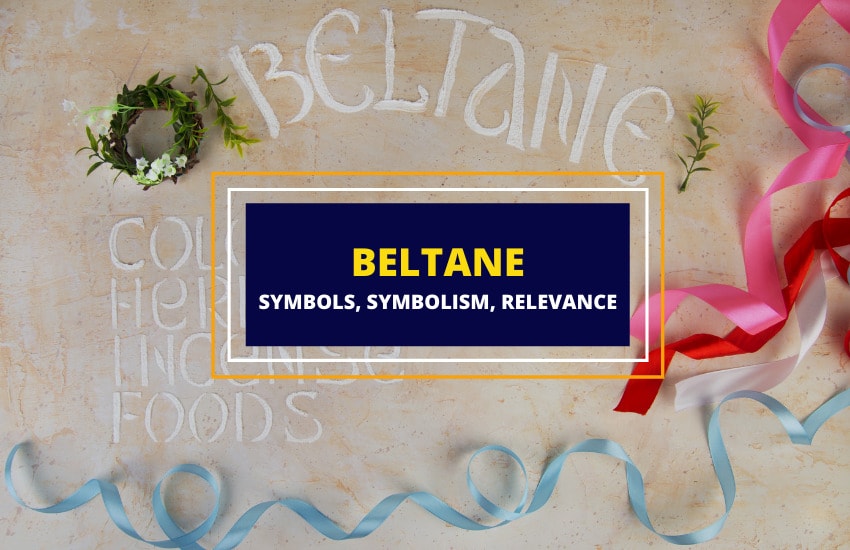
Table of Contents
Beltane is an ancient festival primarily associated with the pastoral peoples of Ireland, Scotland, and Wales. However, there is evidence of this celebration all over Europe. Held on the first of May, Beltane symbolized the arrival of spring and the promise of summer.
It’s a time of rejoicing for the coming crops, animals birthing their young, and for the freedom from the cold and death of winter.
What Is Beltane?
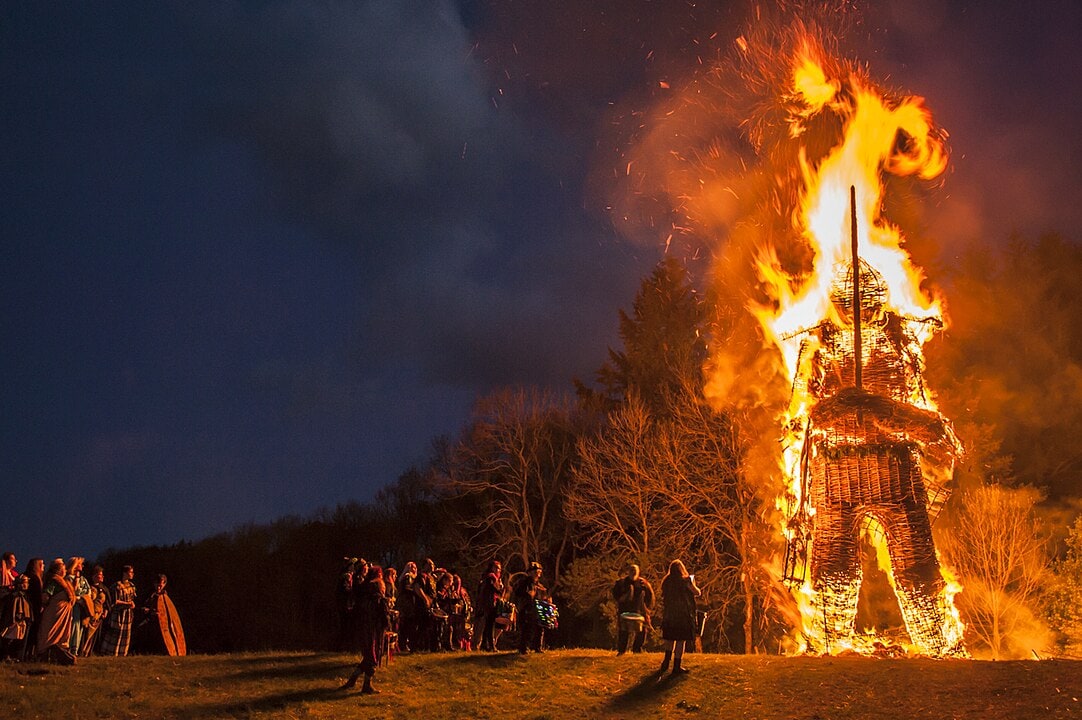
Beltane was, and still is, one of the four great fire festivals of the year. The others are Samhain (Nov. 1), Imbolc (Feb. 1st) and Lammas (Aug. 1), all of which are midpoints between season changes called cross quarter days.
A fire festival celebrating the coming of summer and the fertility of the crops and animals, Beltane was an important festival to the Celts. Beltane is also the most sexually overt Celtic festival. While there don’t appear to have been rituals of sex to celebrate Beltane, traditions such as the Maypole are representative of sexuality.
Beltane is a Celtic word meaning the ‘fires of Bel’, as the featured deity of the festival was Beli (also called Belenus or Belenos). The Celts worshipped the sun, but it was more of an allegorical reverence in connection to Beli, as they saw him as a representation of the restorative and healing powers of the sun.
Archaeological digs have unearthed numerous shrines all over Europe dedicated to Beli and his many names. These shrines centered on healing, regeneration, and fertility. Around 31 sites have been uncovered, the scale of which suggests that Beli was likely the most worshipped god in Italy, Spain, France, and Denmark as well as the British Isles.
Beltane Symbols
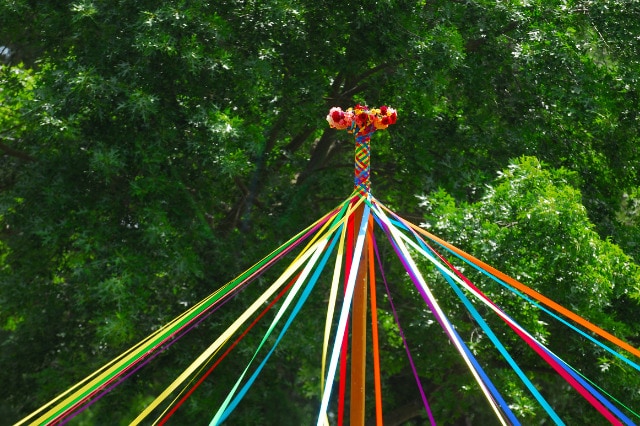
The symbols of Beltane are associated with its concepts – the fertility of the coming year and the coming of summer. The following symbols all represent these concepts:
- Maypole – represents male energy,
- Antlers or horns
- Acorns
- Seeds
- Cauldron, Chalice, or Cup – represents female energy
- Honey, oats, and milk
- Swords or arrows
- May baskets
Beltane Rituals and Traditions
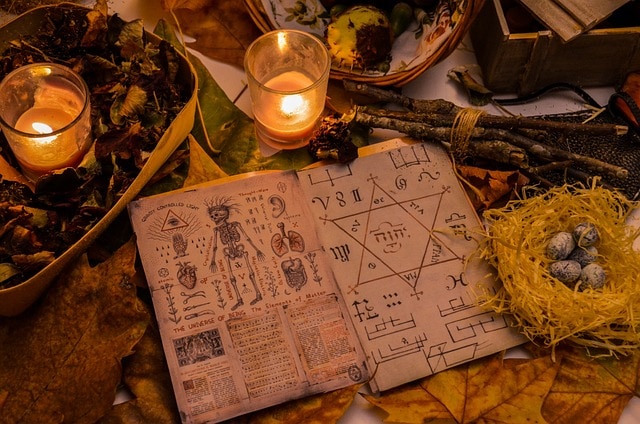
1- Fire
Fire was the most important aspect of Beltane and many of the rituals were centered around it. For example, the lighting of bonfires by the druidic priesthood was a significant ritual. People jumped over these huge fires to cleanse themselves of negativity and to bring good luck for the year. They also walked their cattle between fire gates before putting them out to pasture for the season, as they believed this ensured protection from disease and predators.
2- Flowers
At midnight on April 30th, young people from every village would enter the fields and forests to gather flowers and foliage. They would bedeck themselves, their families, friends, and homes with these flowers, and would stop at every home to share what they had collected. In exchange, they received fantastic food and drink.
3- Maypoles
Along with flowers and greenery, male revelers would cut down a large tree and stand the pole in town. The girls would then decorate it with flowers, and dance around the post with ribbons. Otherwise known as the Maypole, the girls moved in a clockwise motion, called “deosil,” to mimic the sun’s movement. The Maypole represented fertility, marriage prospects, and luck, and was seen as a potent phallic symbol that represented Beli.
Welsh Celebrations of Beltane
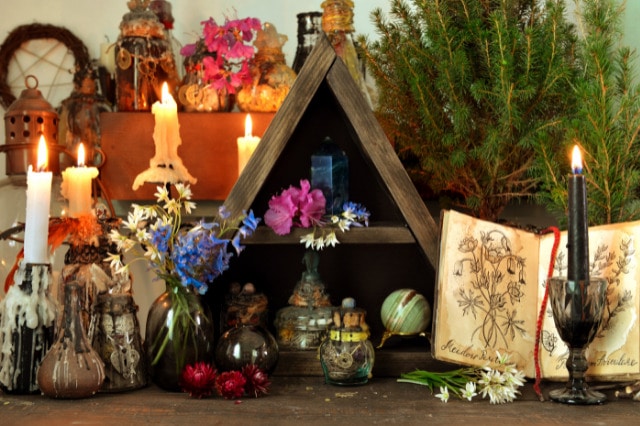
Called Galan Mae, Calan Mai or Calan Haf, the Beltane celebrations of Wales took on a different tone. They too had rituals focused on fertility, new growth, purification, and staving off disease.
April 30th is Nos Galan and May 1st is Calan Mai. Nos Galan is one of the three great “spirit nights” of the year, called “ysbrydnos” (pronounced es-bread-nos) along with Samhain on November 1st. These are when the veils between the worlds are thin allowing for all kinds of spirits to come in. Participants lit bonfires, engaged in love divination and, as recent as the 19th century, sacrificed a calf or sheep as an offering to prevent disease among the animals.
1- Dancing and Singing
For the Welsh, Calan Haf or Calan Mai is the first day of summer. At the break of dawn, summer carolers roamed the villages singing songs called “carolau mai” or “canu haf,” literally translating to “summer singing”. Dancing and songs were also popular as people meandered from home to home, usually accompanied by a harpist or fiddler. These were explicit songs intended to give thanks for the coming season and people rewarded these singers with food and drink.
2- A Mock Fight
During the festival, the Welsh often had a mock fight between men, representing the fight between winter and summer. An older gentleman, carrying a stick of blackthorn and wool-dressed shield, played the role of Winter, while Summer was played by a young man, adorned with ribbons and flowers with a willow, fern, or birch wand. The two would engage in fighting with straw and other objects. In the end, Summer always wins, and then crowns a May King and Queen prior to festivities of merriment, drinking, laughter, and games lasting all night long.
3- Straw Figure of Love
Around some areas of Wales, men would give a small straw figure of a man with a pinned note as a display of affection for a woman they fancied. However, if the woman had many suitors, brawling wasn’t uncommon.
4- Welsh Maypole
The Village Green called, “Twmpath Chware,” is where Maypole dances occurred along with a harpist or fiddler. The Maypole was usually a birch tree and was painted bright colors, adorned with ribbons and oak branches.
5- Cangen Haf – A Variation
In Northern Wales, a variation called Cangen Haf was celebrated. Here, up to 20 young men would dress all in white with ribbons, except two called the Fool and Cadi. They carried an effigy, or Cangen Haf, decorated with spoons, silver items, and watches donated by the villagers. They would go through the village, singing, dancing, and asking money from the villagers.
Scottish Celebrations of Beltane
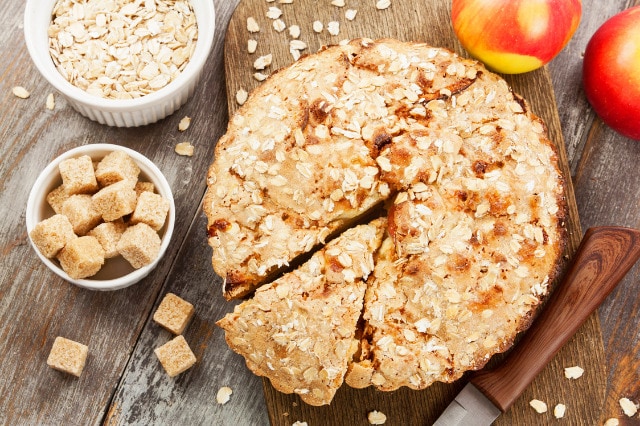
Today, the largest Beltane festivals are celebrated in Edinburgh. “Bealtunn” in Scotland had its own characteristics. They too would light fires, extinguish hearth fires, jump over fires and drive cattle through fire gates. As with other cultures that celebrated Beltane, fire was an important aspect of the celebrations for the Scots. Great celebrations were held in several areas of Scotland, with Fife, the Shetland Isles, Helmsdale, and Edinburgh being main centers.
The Bannock Charcoal Victim
Called, “bonnach brea-tine”, the Scottish people would bake Bannocks, a type of oat cake, which would be a typical cake except with a piece of charcoal inside. Men divided the cake into several pieces, distributed it among themselves, and then ate the cake blindfolded.
Whoever received the piece of charcoal was chosen as the victim for a mock human sacrifice on May 1st to Bellinus, called the “cailleach beal-tine”. He is pulled toward the fire to be sacrificed, but he is always rescued by a group that rush in to save him.
This mock sacrifice could have its roots in ancient times, when a person in the community may have been sacrificed to ensure the end of droughts and famine, so that the rest of the community would survive.
Lighting the Fire
Another ritual included taking a seasoned oak plank with a hole bored through its center and placing a second piece of wood through the middle. The wood would then be rubbed together quickly to create intense friction until it created fire, aided with a combustible agent taken from birch trees.
They saw this manner of lighting the fires as cleansing the spirit and country, a preservative against wickedness and disease. It was believed that if anyone involved in making the fire was guilty of murder, theft, or rape, the fire wouldn’t light, or its usual power would be weak in some way.
Modern Practices of Beltane
Today, the practices of Maypole dances and fire jumping along with celebrating sexual fertility and renewal is still practiced by Celtic neopagans, Wiccans, as well as the Irish, Scottish, and Welsh.
Those who celebrate the festival set up a Beltane altar, incorporating objects that symbolize new life, fire, summer, rebirth, and passion.
People offer prayers to honor the gods associated with Beltane, including Cernunnos and various forest deities. The bonfire ritual of Beltane, as well as the Maypole dance and other rituals are still practiced today.
Today, the agricultural aspect is no longer as important to those who celebrate Beltane, but the fertility and sexuality aspects continue to be significant.
In Brief
Beltane celebrated the coming season, fertility, and an appreciation for summer. Many rituals across the British Isles show a distinct display and reverence for the cycles of life and death. Whether these were the sacrifice of a living being or mock battles between winter and summer, the theme remains the same. While the essence of Beltane has changed over the years, the fertility aspect of the festival continues to be celebrated.








